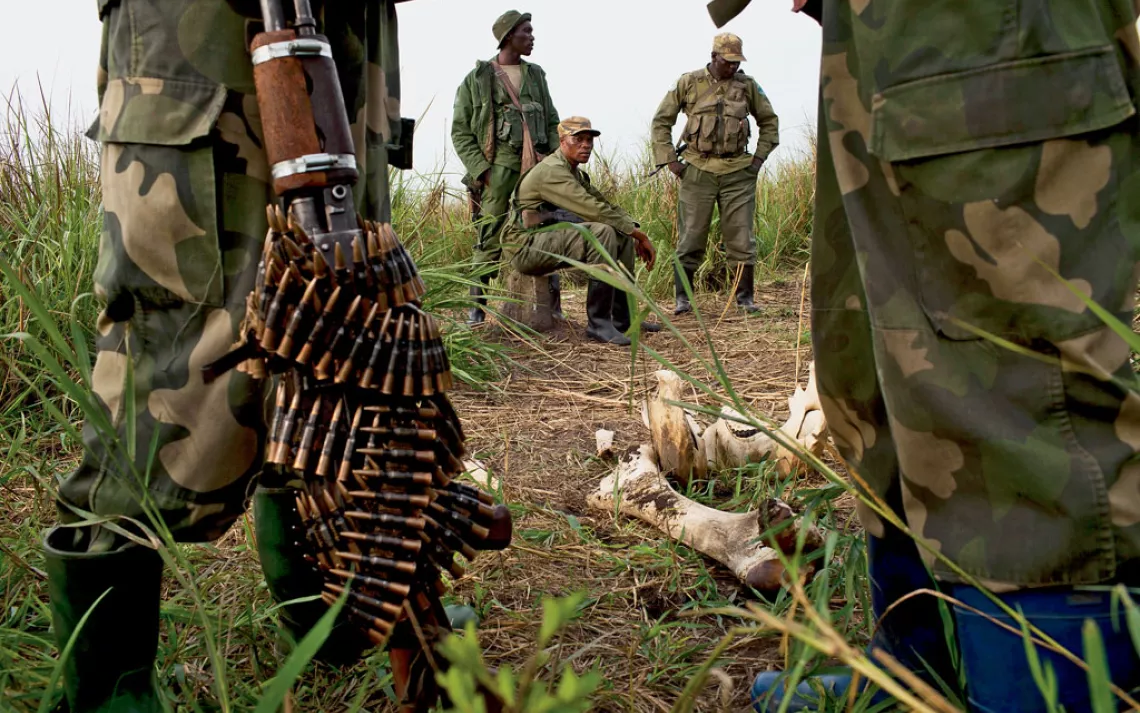Poaching in Africa
Tusks and horns are no match for automatic weapons

Anti-poaching rangers and Congolese soldiers patrolling Garamba National Park—too late for this elephant killed for its tusks. | TYLER HICKS/New York Times/Redux
Poachers are rapidly killing off Africa's most iconic megafauna to make keychains and impotence cures. Coming on top of old threats like habitat loss and trophy hunting, this historic spasm of slaughter is fueled by rising demand in Asia for products made from rare animals—the more endangered and expensive, the better.
"The economy of the Far East is booming," Princeton University ecology professor Andrew Dobson says. "It's created wealth that people like to spend on things that used to be rare trinkets. If you want to rise today in the Chinese military, you give your supervising officer something made out of ivory." In Vietnam, reports GlobalPost, wine spiked with ground rhino horn "has become the party drug of choice . . . a fashionable way to show wealth and status."
Wildlife poaching today is highly militarized. Last year hundreds of Sudanese militiamen swept 600 miles south on horseback to slaughter 300 elephants in Cameroon. In the Democratic Republic of Congo, scores of elephants are being gunned down with automatic weapons fired from helicopters—some of them linked to the region's national armies. And Joseph Kony is financing his notorious Lord's Resistance Army with plundered ivory, which sells in China for up to $1,000 a pound. A recent study in PLOS ONE found that the population of forest elephants in Central Africa had suffered a "catastrophic" decline of 62 percent in the past nine years, and could be close to extinction in another seven. As many as 1 out of 22 African elephants may have been killed last year.
The situation is even worse for rhinos, whose horns are worth more than their weight in gold. In South Africa, home to most of the continent's 25,000 remaining rhinos, 7 to 14 are lost each week. Even lions are in danger, their population having declined by 30 percent over the past two decades. A new threat to the king of the jungle: With wild tigers almost gone, dealers in quack aphrodisiacs are now selling lion bone as a substitute.
The Convention on International Trade in Endangered Species seems inadequate to deal with the crisis. Its decision in 2008 to allow African nations to legally sell more than 100 tons of stockpiled ivory to "accredited traders" in Japan and China revived what had been a moribund carving industry. And even while elephants are being exterminated in Africa, ivory is still legally sold in Chinese markets.
 The Magazine of The Sierra Club
The Magazine of The Sierra Club



